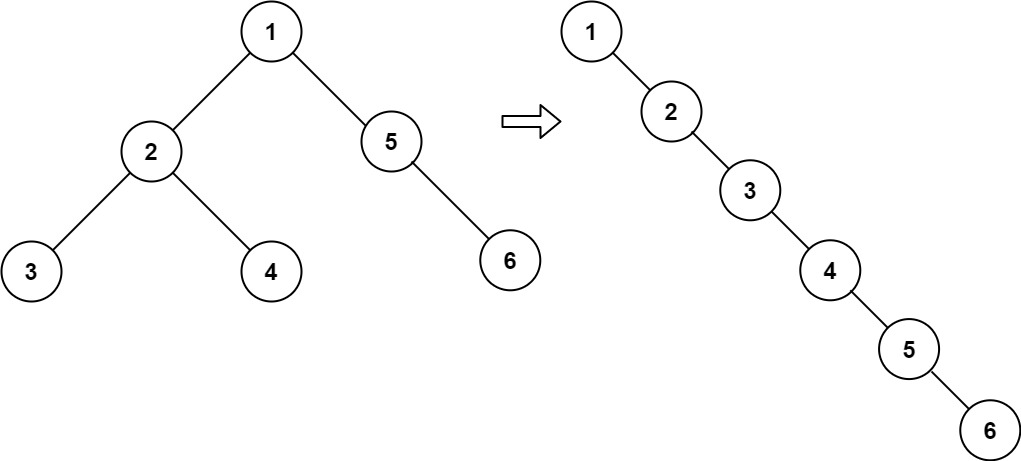LeetCode-in-All
114. Flatten Binary Tree to Linked List
Medium
Given the root of a binary tree, flatten the tree into a “linked list”:
- The “linked list” should use the same
TreeNodeclass where therightchild pointer points to the next node in the list and theleftchild pointer is alwaysnull. - The “linked list” should be in the same order as a pre-order traversal of the binary tree.
Example 1:

Input: root = [1,2,5,3,4,null,6]
Output: [1,null,2,null,3,null,4,null,5,null,6]
Example 2:
Input: root = []
Output: []
Example 3:
Input: root = [0]
Output: [0]
Constraints:
- The number of nodes in the tree is in the range
[0, 2000]. -100 <= Node.val <= 100
Follow up: Can you flatten the tree in-place (with O(1) extra space)?
Solution
; Definition for a binary tree node.
#|
; val : integer?
; left : (or/c tree-node? #f)
; right : (or/c tree-node? #f)
(struct tree-node
(val left right) #:mutable #:transparent)
; constructor
(define (make-tree-node [val 0])
(tree-node val #f #f))
|#
(define/contract (flatten root)
(-> (or/c tree-node? #f) void?)
(define (find-tail root)
(cond
[(not root) root]
[else
(let ([left (tree-node-left root)]
[right (tree-node-right root)])
(if left
(let ([tail (find-tail left)])
; Stitch right subtree below the tail
(set-tree-node-left! root #f)
(set-tree-node-right! root left)
(when tail
(set-tree-node-right! tail right))
; Return final tail
(if (and tail (tree-node-right tail))
(find-tail (tree-node-right tail))
tail))
; If no left subtree, current node is tail
(if (tree-node-right root)
(find-tail (tree-node-right root))
root)))]))
(when root
(find-tail root))
(void))

